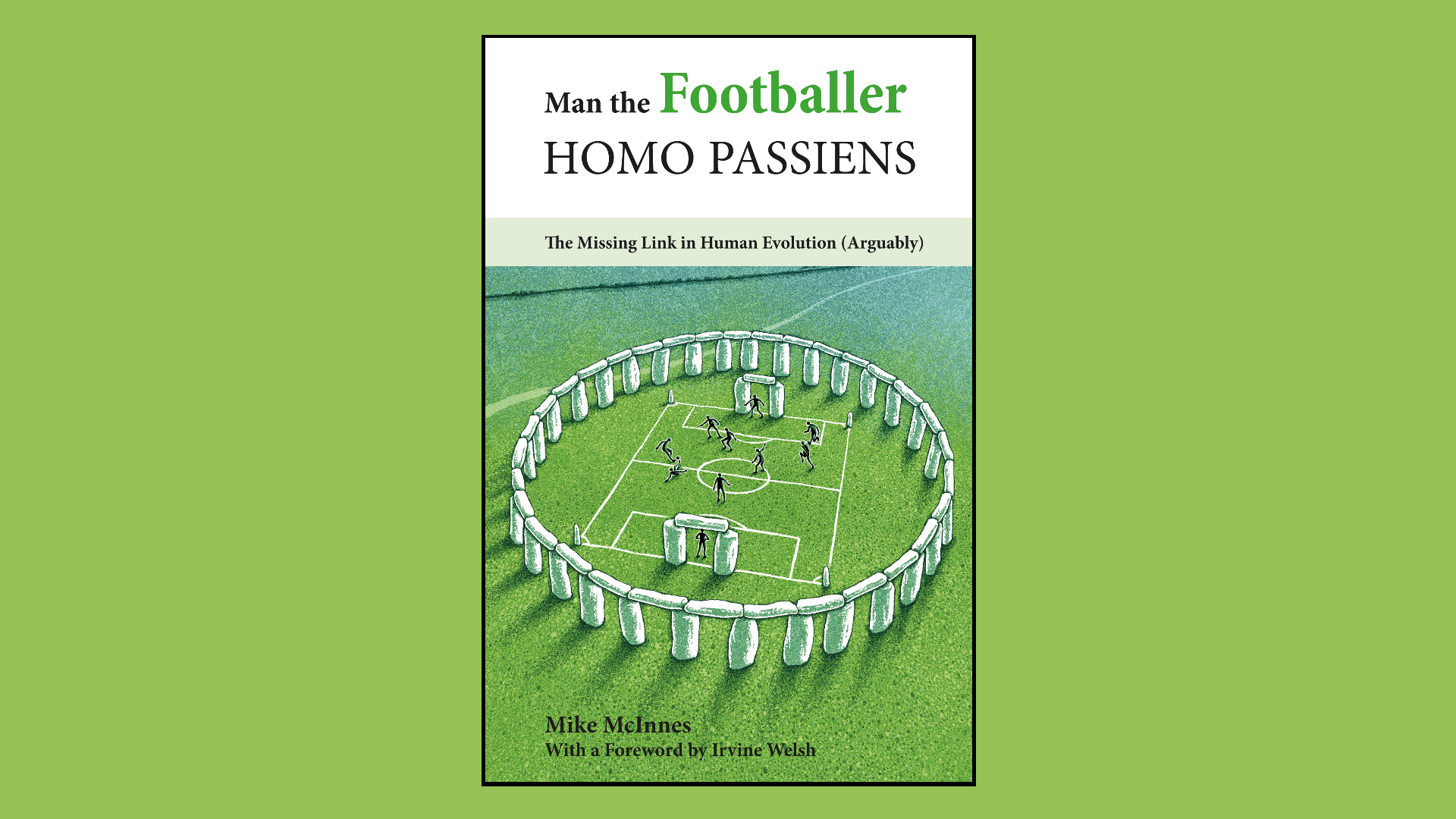A selection of artwork by Matt Kenyon for Man the Footballer: Homo Passiens.
Homo Passiens: Man the Football is available to order today from our online bookshop.

Artist’s impression of athletic, right-sided “Man The Footballer” based on skeletal remains from 0.9 million years ago, unearthed in East Africa.

The Cernes Abbas Giant as it appeared in 990 a.d., created to celebrate Cernes Abbas F.C. winning the cup for the tenth time. The trophy in the giant’s hand was later removed and replaced with a giant club – the version we are more familiar with today.

Prehistoric cave art depicting early humans playing football. Note the primitive balls and skeletal goalposts.

The Surrealist & Absurdist F.C. founded in 1940. A fantasy dream-team of absurdists
and philosophers responsible for The Manifesto of Football Surrealism.

“Le Poisson et la Beauté du Football” by Jean Francois Cantona, the “Piscatorial Surrealist”. Reproduced with permission from the Museum of Modern Art in Edinburgh.

Artist’s impression of early football playing by Passeolithic Man in the stone circle of Brodgar on the island of Orkney. Training and accommodation facilities both for home and visiting players and fans were found elsewhere at the Ness.

The Ronaldo constellation as viewed in the Northern Hemisphere. This was recently identified and officially recognised by the International Astronomical Union.

The elusive Mession particle that binds foot and ball, recently isolated in the
Large Hadron Collider at CERN.

Chinese watercolour of Jiaodaruism Stadium, Xian, Shaanxi, one of the stadia
uncovered by archaeologists in China, where the game of football began around
3,000 years ago. Artefacts from these excavations include remnant balls, football
tunics and boots and a unique form of bipedal football trousers, which were
formerly thought to be horse-riding attire until accurate passienic dating methods
were applied.

Early stone vignette depicting crowd and players in one notable match. Passienic specialists interpret the glyphys thus: The two sides lined up with a 4-4-2 formation against a 3-5-2. It was a bad-tempered match with some questionable officiating and a serious injury. The restless crowd was deeply unhappy with a sending off. Then (against the run of play) there was a breakaway move and a brilliant goal was scored. The crowd cheered and the players celebrated a famous win.

Leonardo da Vinci-style statue of David Beckham and his golden balls.

Reconstructed urn dating from 450 B.C. depicting the Roman sport of harpastum, unearthed from a site close to Arthur’s O’on. It depicts an early defensive line-up by Ajax. Note the primitive shin-pads.
Discover more from Homo Passiens – Man the Footballer here.
Order our latest quarterly – featuring an interview with Sepp Blatter, Puskas’ big night in south east London and much more – Issue 37.
Support The Squall and read Issue One, Issue Two and Issue Three for a recommended £3 each.




